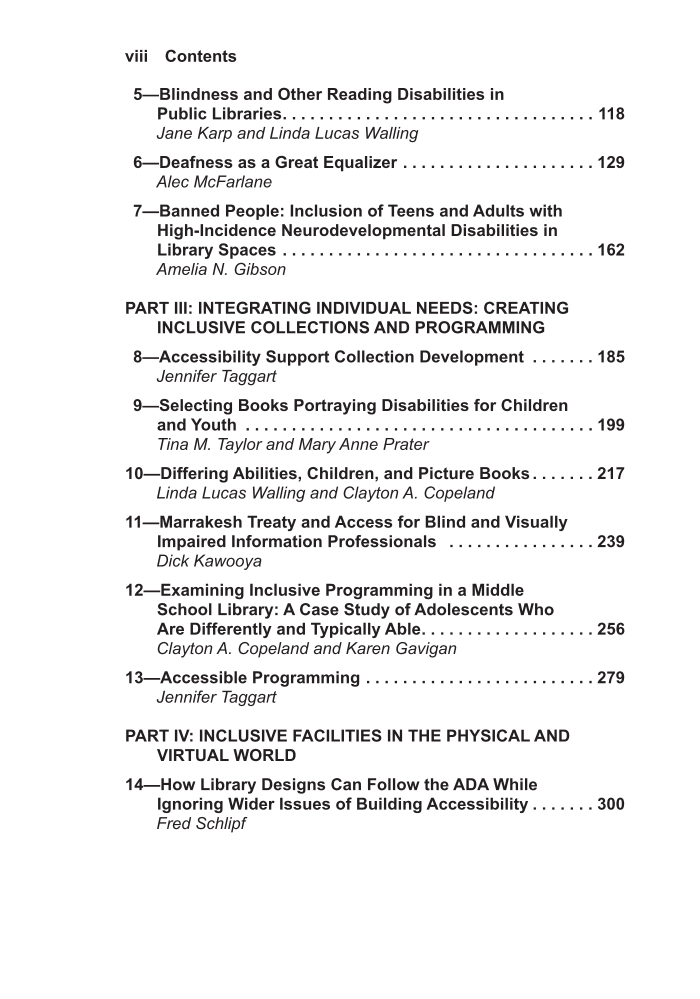viii Contents 5—Blindness and Other Reading Disabilities in Public Libraries. . . . . . . . . . . . . . . . . . . . . . . . . . . . . . . . . . . 118 Jane Karp and Linda Lucas Walling 6—Deafness as a Great Equalizer . . . . . . . . . . . . . . . . . . . . . . 129 Alec McFarlane 7—Banned People: Inclusion of Teens and Adults with High-Incidence Neurodevelopmental Disabilities in Library Spaces . . . . . . . . . . . . . . . . . . . . . . . . . . . . . . . . . . . 162 Amelia N. Gibson PART III: INTEGRATING INDIVIDUAL NEEDS: CREATING INCLUSIVE COLLECTIONS AND PROGRAMMING 8—Accessibility Support Collection Development. . . . . . . . 185 Jennifer Taggart 9—Selecting Books Portraying Disabilities for Children and Youth. . . . . . . . . . . . . . . . . . . . . . . . . . . . . . . . . . . . . . . 199 Tina M. Taylor and Mary Anne Prater 10—Differing Abilities, Children, and Picture Books . . . . . . . . 217 Linda Lucas Walling and Clayton A. Copeland 11—Marrakesh Treaty and Access for Blind and Visually Impaired Information Professionals . . . . . . . . . . . . . . . . . 239 Dick Kawooya 12—Examining Inclusive Programming in a Middle School Library: A Case Study of Adolescents Who Are Differently and Typically Able. . . . . . . . . . . . . . . . . . . . 256 Clayton A. Copeland and Karen Gavigan 13—Accessible Programming . . . . . . . . . . . . . . . . . . . . . . . . . . 279 Jennifer Taggart PART IV: INCLUSIVE FACILITIES IN THE PHYSICAL AND VIRTUAL WORLD 14—How Library Designs Can Follow the ADA While Ignoring Wider Issues of Building Accessibility . . . . . . . . 300 Fred Schlipf
Document Details My Account Print multiple pages
Print
You have printed 0 times in the last 24 hours.
Your print count will reset on at .
You may print 0 more time(s) before then.
You may print a maximum of 0 pages at a time.





















































































































































































































































































































































































































































































































































